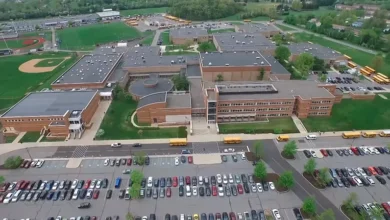School: A Cornerstone of Learning and Growth

Introduction to the Concept of School
School is not just a physical building with classrooms, blackboards, and desks; it is an institution that shapes individuals for life. From the moment children step through the gates of a school, they begin a journey filled with knowledge, challenges, friendships, and self-discovery. It is the place where raw curiosity is molded into structured learning, and where young minds are prepared to face the complexities of the real world.
Beyond academics, schools also serve as social environments that nurture creativity, discipline, and emotional intelligence. They offer a structured framework where students can explore their talents, develop problem-solving skills, and learn the importance of responsibility. While the essence of schooling may differ from culture to culture, the fundamental goal remains the same: to guide young learners towards a brighter future.
In today’s fast-paced and interconnected world, the role of schools has expanded even further. They are no longer just centers of rote learning but have transformed into hubs of innovation, inclusivity, and holistic development. This evolution highlights how schools adapt to the changing needs of society while keeping the essence of education intact.
The Academic Foundation of Schools

The most obvious role of any school is to provide education. From teaching basic literacy skills like reading and writing to introducing complex concepts in science, mathematics, and literature, schools lay the foundation of intellectual growth. This structured knowledge becomes the backbone for higher education and professional pursuits.
Schools operate under structured curricula that ensure students receive a balanced and well-rounded education. Subjects like mathematics sharpen logical thinking, while literature and history instill critical analysis and cultural awareness. The integration of arts, sports, and extracurricular activities further ensures that learning extends beyond books. This broad exposure is vital in shaping students into versatile individuals.
It’s important to recognize that schools don’t only impart facts and theories. They encourage the development of reasoning, curiosity, and problem-solving. When a teacher explains a math problem or a science experiment, they’re not only teaching solutions but also encouraging students to think critically. This is why the academic foundation provided in schools is irreplaceable—it creates independent thinkers capable of navigating challenges in real life.
The Social Experience of School Life
If you ask anyone about their school memories, chances are they’ll talk about friendships, playgrounds, and experiences outside the classroom. That’s because schools are also social ecosystems where students learn essential interpersonal skills. Sharing lunches, working in groups, participating in debates, or even competing in sports teaches teamwork, empathy, and respect.
These social experiences shape how individuals interact in society. Schools give students the opportunity to communicate with peers from different backgrounds, cultures, and abilities. This exposure naturally fosters inclusivity and helps students appreciate diversity from an early age. Friendships formed in schools often last a lifetime and become a strong support system during life’s ups and downs.
Moreover, schools also provide the first real taste of community living. Whether it’s celebrating annual functions, participating in cultural festivals, or simply working together in class projects, students experience the joy of collective effort. These shared experiences play an important role in building emotional resilience, leadership skills, and a sense of belonging.
The Role of Teachers in Shaping Students
At the heart of every school are its teachers. Teachers act not only as educators but also as mentors, role models, and guides. A good teacher does more than teach lessons—they inspire, motivate, and sometimes even change the direction of a student’s life. Many successful individuals often credit their achievements to the encouragement and belief of a teacher.
Teachers are tasked with balancing discipline and encouragement. They foster an environment where curiosity is welcomed, mistakes are seen as learning opportunities, and perseverance is rewarded. Beyond academic teaching, teachers also help students develop values such as honesty, kindness, and responsibility—traits that remain essential throughout life.
In modern times, the role of teachers has become even more demanding. With access to the internet, students are exposed to vast amounts of information. Teachers now have the responsibility of guiding students to differentiate between credible knowledge and misinformation. They are no longer just providers of information but facilitators of critical thinking and creativity.
Schools as Centers of Discipline and Character Building
One of the underrated aspects of schooling is the discipline it instills. Regular routines, punctuality, adherence to rules, and respect for authority are values that schools quietly embed into students’ lives. These habits might seem simple during childhood but become invaluable in adulthood when professionalism and accountability are expected.
Character building goes hand-in-hand with discipline. Schools provide countless opportunities where students are tested—not just academically but also morally. Whether it’s helping a classmate in need, standing up for what’s right, or taking responsibility for mistakes, these moments shape a student’s moral compass. Over time, such values contribute to building a responsible and ethical society.
Furthermore, through activities like debates, group projects, and leadership roles in student councils, schools help students develop confidence. They learn to voice opinions, accept constructive criticism, and respect diverse perspectives. These qualities create well-rounded individuals who are capable of contributing positively to the world.
The Evolution of Schools in the Modern Era
Schools have come a long way from being simple spaces for rote learning. With the rise of technology and global connectivity, education systems have been forced to adapt. Today, digital classrooms, e-learning platforms, and smart boards are a common part of school life. Students now have access to global knowledge, making learning more engaging and interactive.
However, this evolution is not just about technology. Schools are increasingly prioritizing mental health, inclusivity, and life skills education. Many schools now have dedicated counselors to help students manage stress, anxiety, or academic pressure. Topics such as financial literacy, emotional intelligence, and digital responsibility are slowly being integrated into the curriculum to prepare students for real-world challenges.
The pandemic also transformed schools in an unprecedented way. Online learning became the new normal, and schools had to reimagine how to keep students engaged virtually. While it was a challenging phase, it also highlighted the resilience and adaptability of schools as institutions. Now, blended learning—a mix of in-person and online education—has become a forward-looking approach to ensure flexibility in education.
Why Schools Remain Irreplaceable
With the rise of homeschooling, online courses, and alternative education methods, some people question whether traditional schools are still necessary. The truth is, while technology and alternative models offer flexibility, schools remain irreplaceable. The holistic environment they provide—combining academics, social interaction, discipline, and extracurricular activities—cannot be fully replicated at home or online.
Schools act as a microcosm of society where children learn to navigate diverse personalities, challenges, and environments. They provide structured learning and hands-on experiences that go beyond what textbooks or screens can offer. Moreover, the mentorship of teachers and the shared joy of learning with peers are aspects unique to schools.
Most importantly, schools instill a sense of community and belonging. The morning assemblies, annual functions, group celebrations, and even shared struggles create a bond that becomes a significant part of one’s identity. No matter how advanced technology becomes, this human element of schooling ensures that schools will continue to hold their irreplaceable value.
Conclusion
School is much more than an institution of academics—it is a place where knowledge meets character, where discipline meets creativity, and where friendships meet lifelong memories. It plays a pivotal role in shaping not only individuals but also the society we live in.
From laying the academic foundation to teaching life lessons and fostering inclusivity, schools continue to evolve with time while staying true to their core mission: nurturing young minds for the future. Despite the challenges of modern education and the availability of alternatives, schools remain at the heart of learning and growth.
In the end, the experiences, lessons, and values learned in school often last a lifetime. They create the foundation upon which every dream, ambition, and achievement is built. Truly, schools are not just places of education—they are the training grounds of life itself.


